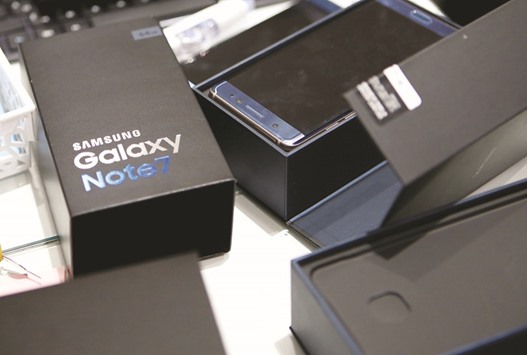Samsung Electronics Co will reveal tomorrow that irregularly sized batteries made by an affiliate caused the overheating and fires that eventually forced the cessation of its Note 7 smartphone line, a person familiar with the matter said.
The world’s largest smartphone maker is scheduled to announce the results of an investigation into the fires that forced it to kill its most expensive device last year, an episode estimated to cost Samsung upwards of $6bn. The Korean company will announce that Samsung SDI Co made batteries that didn’t fit properly into the device, causing it to overheat, said the person, who declined to be identified because the results of the probe haven’t been made public.
Samsung has been intent on regaining consumers’ trust since the Note 7 fiasco. The company’s deepest business crisis in its 48 years began with a growing list of reports about the device overheating or bursting into flame. That triggered a global recall, inviting regulatory scrutiny and public outrage around the world. Samsung ultimately apologised and killed off the line. It enlisted multiple investigation agencies including UL, a US-based testing and certification firm, to figure out what went wrong.
The Wall Street Journal first reported on the investigation results. It also cited unidentified sources as saying there was a manufacturing issue involving batteries made by another supplier, Amperex Technology Ltd, that resulted from a quick ramp-up in production of replacement phones. An ATL representative didn’t answer a call for comment outside of normal business hours. Samsung had no immediate comment. Samsung SDI representatives didn’t respond to calls seeking comment outside of working hours.
The company says it’s now focused on learning from its mistakes as it prepares to launch the next in its Galaxy S line, said to be in March or April. “We should not compromise with even the tiniest problems in product quality,” co-CEO Kwon Oh-hyun said during his annual New Year’s speech. “Let’s recover our pride by improving manufacturing processes and safety inspections.”

An exchanged Samsung Galaxy Note 7 is seen at the company’s headquarters in Seoul. The world’s largest smartphone maker is scheduled to announce tomorrow the results of an investigation into the fires that forced it to kill its most expensive device last year.


